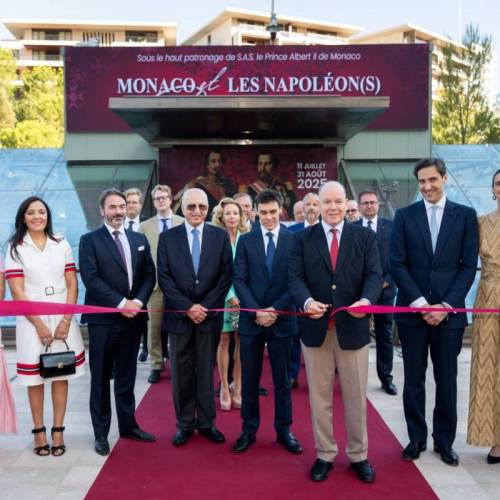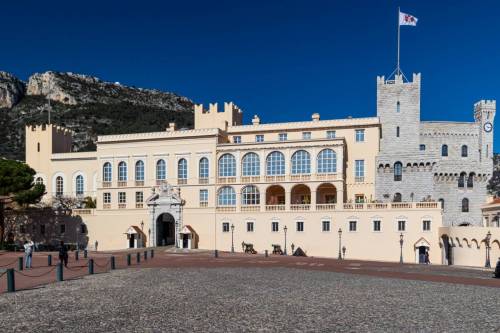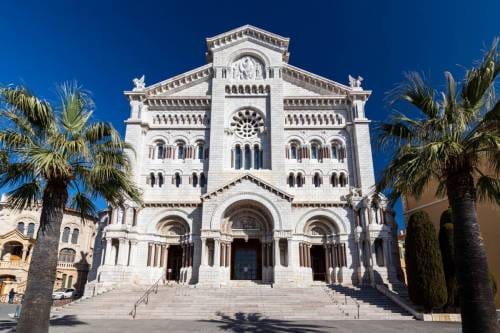Throughout its history, humanity has been obsessed with seeking eternal youth, searching for ways to slow down the clock when it comes to our own mortality. Stories about the search for the ever-elusive fountain of youth or elixir of life have been told over and over again in mainstream culture. To cheat old age and death they invented magic elixirs, took milk baths and went in search of rejuvenating apples. In modern times millions are spent every year on things like hair dye, wrinkle cream, plastic surgery, diet trends and countless other things which are designed to help us stay young.
Did you know that it was in the 1920s — exactly one hundred years ago — that people moved from words to deeds? The first surgical operations for a radical rejuvenation of the body were carried out. This bold step was taken by a native of Russia, Dr. Serge Voronoff, and he became a cult figure of his time.
The land on the border of France and Italy, which in the past belonged to the princely family of Monaco, became the place for conducting scientific experiments to achieve immortality…
Serge Voronoff, at the frontier and in advance of his time could not escape controversy though. He even became a legendary character in pop culture and Hollywood — including the prototype of Professor Preobrazhensky from Mikhail Bulgakov’s “Heart of a Dog”.
The controversy was triggered by the novelty of the strange and somewhat disturbing methods at attempting to attain longevity through surgical procedures and transplants.
But were his surreal methods all that horrific or did he actually discover an effective method for combating old age?
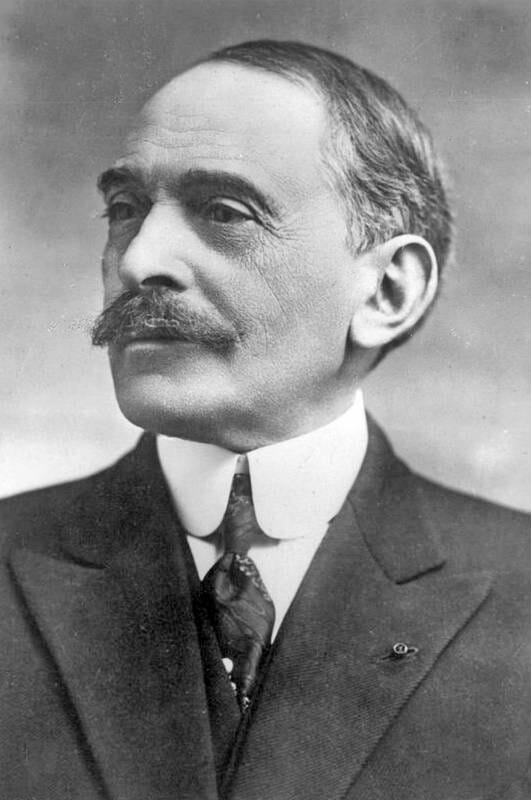
From Tambov to Cairo
Samuel Abramovich Voronov was born in 1866 in Tambov province, Russia. The family was large and rather poor, but the parents managed to send the 18-year-old boy to study in Paris, at the University of France. In 1889, Samuel was hired to work in the laboratory of the famous physician Charles Edouard Brown-Séquard — just in that year when Brown-Séquard began to experiment with subcutaneous injections of extracts from the testicles of guinea-pigs and dogs (we must pay tribute to the 72-year-old professor: he performed his experiments on himself). The injections were designed to stop age-related changes in an aging organism. The results of Brown-Séquard’s work were not strong enough to make Voronov believe that just injections were enough to rejuvenate. He believed instead that surgical intervention would be more effective. The young doctor from Russia continued his scientific research under the guidance of the French biologist and surgeon Alexis Carrel — the future Nobel Prize laureate in Physiology and Medicine (1912), an honorary member of the USSR Academy of Sciences (1920s), who in the 1930s turned into an ardent eugenicist, and in the 1940s supported the regime of Hitlerite Germany.
From 1896 to 1910 Samuel Voronov works in Cairo at the court of the ruler of Egypt, where, among other things, he studies the negative retarding effects that castration has on the male body, eunuchs being the main source of his research. The overwhelming majority of Egyptian eunuchs suffered from diseases and excess weight and died early, and this fact strengthened Voronov in the idea that clues to rejuvenation lay precisely in the work of the gonads. To prove his theory, he began to carry out operations to transplant the gonads from a young ram to an old one. Aged rams became alert and active, which convinced the doctor of the correctness of his assumptions and inspired further research on rejuvenation.
During this period, Voronov published a number of scientific works and textbooks on operative surgery and gynecology. Upon his return to France, from Cairo, in 1911, Samuel, who had received French citizenship, was appointed head of the laboratory of experimental surgery and physiology at the Collège de France. Then he changed his name and became world famous as Serge Voronoff.
Initial Success with Transplants on Thyroid Patients
Voronoff began by transplanting slices of chimpanzee thymus glands into thyroid patients. In 1913, a demonstration operation in the presence of several eminent colleagues was carried out to transplant a baboon gland to a boy with congenital dementia, which gave an excellent result: the patient began to quickly catch up with his peers in development. This allowed the doctor to declare that his method can be used not only to rejuvenate the body, but also to improve it.
Acknowledged Success in Rejuvenation of Humans by his Peers in 1923
From 1917 to 1926 (with a break for the First World War), the doctor performed more than five hundred operations on sheep, goats and bulls, inoculating old animals with “thin slices” of the testicles of young individuals. Voronoff noted that as a result of this intervention, the old animals regained their former “agility and playfulness.“ He also believed that monkey gland transplantation could be used to treat dementia.
Before that he had transplanted the testicles of executed criminals to millionaires and, when demand exceeded his supply, began using tissue from monkey testicles.
In 1923, 700 famous surgeons from all over the world applauded Voronoff’s success in “rejuvenation” during the International Surgical Congress in London.
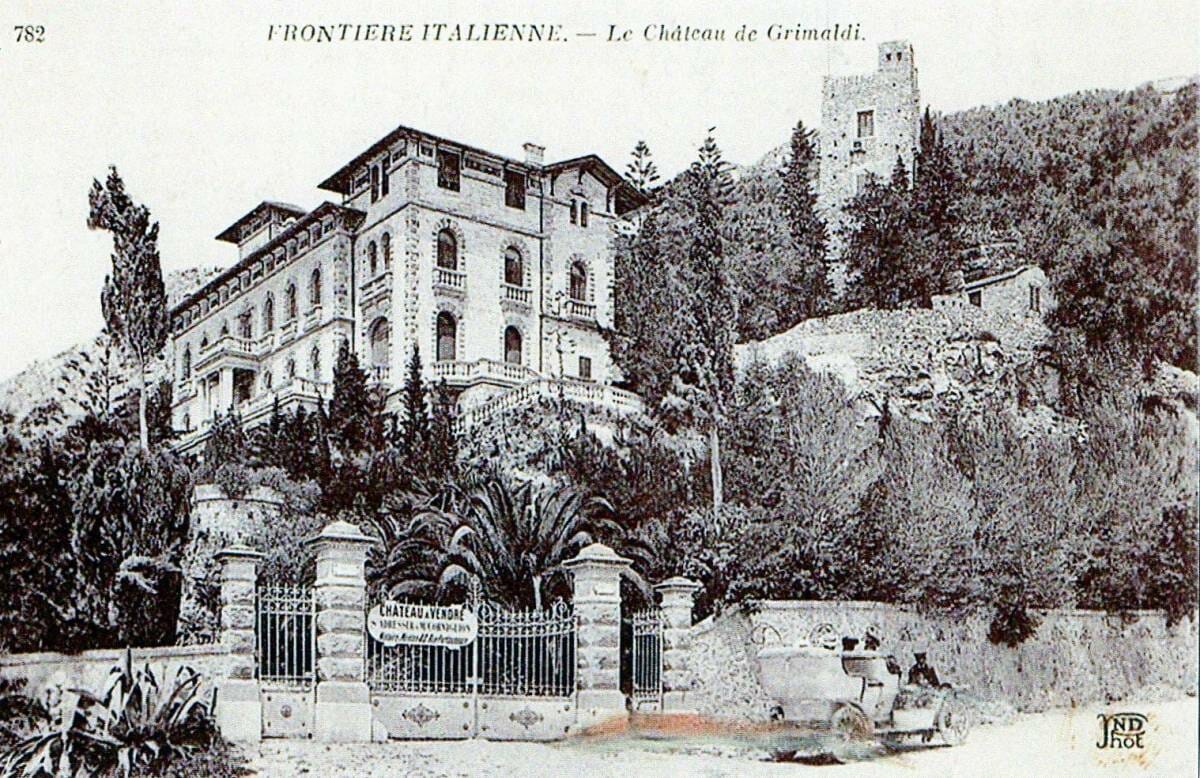
World fame and crowds of fans
The first official transplantation of monkey glands to humans was carried out on June 12, 1920, and by the mid-1920s, Samuel Abramovich had become a world celebrity. The Russian surgeon, successfully worked not only in France, but all over the world, including the USA and Latin America. The doctor, passionately carried away by his idea, worked tirelessly and put the operations on stream, so that the number of satisfied patients grew rapidly and the number of those wishing to turn back the clock swelled. Senescent politicians, celebrities, and just the rich lined up for the operations and were ready to shell out any money …
In Soviet Russia, where the idea of creating a superman was already gaining momentum, the operations carried out by Serge Voronoff also aroused great interest. The doctor regularly published scientific articles in one of the most popular magazines and even had followers from among Soviet scientists.
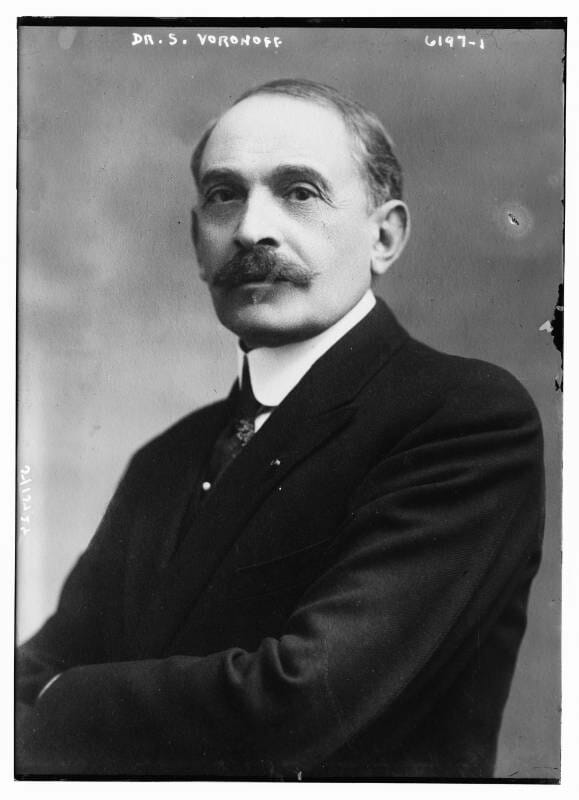
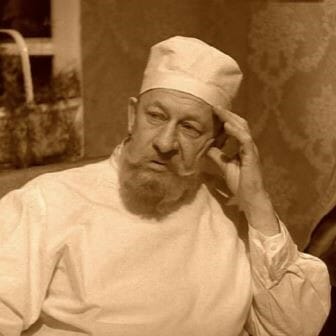
Rejuvenation Factory on the French Riviera at the Grimaldi Castle
To meet the ever-growing demand for material for operations, Voronoff decided to open his own monkey nursery. The French government allowed the famous scientist to use primates to conduct experiments. To house the farm with monkeys, a building called “Castle of Grimaldi” was chosen in a huge park near Menton.
In 1925 Serge Voronoff bought a castle-like Villa with stunning sea views. He lived at the Grimaldi castle for fourteen years. It has windows that look out onto Italy on one side, and France on the other. The territory of the garden had cages where 30 monkeys were placed (the doctor was planning to increase the number of donor primates to at least a hundred), and a former circus worker was entrusted with caring for the animals.
Many famous people in those years were looking for acquaintance with the doctor and they too started to circulate in the village of Grimaldi. Sergei Diaghilev and Vaslav Nijinsky, Josephine Baker and Sarah Bernhardt, Turkish President Ataturk, French Prime Minister Clemenceau and the King of Romania Carol I visited his monkey farm. Voronoff was familiar with the composer Saint-Saëns and the writer Maeterlinck. After the death of his second wife, Evelyn Bostwick, the doctor inherited a huge fortune and could devote himself entirely to science, without worrying about his daily bread.
In 1939, fearing persecution of Jews, Voronoff was forced to flee overseas. Returning to Europe after the end of World War II, he found the castle where he spent 14 years completely destroyed by bombing and he left for Switzerland forever.
The former castle-like Villa of the doctor was restored and passed into private ownership. Despite the fact that on the walls of the villa there is no information about the previous owner, not even a memorial plaque, it is still called Castello Voronoff-Grimaldi and is considered one of the main historical and architectural landmarks of the town.
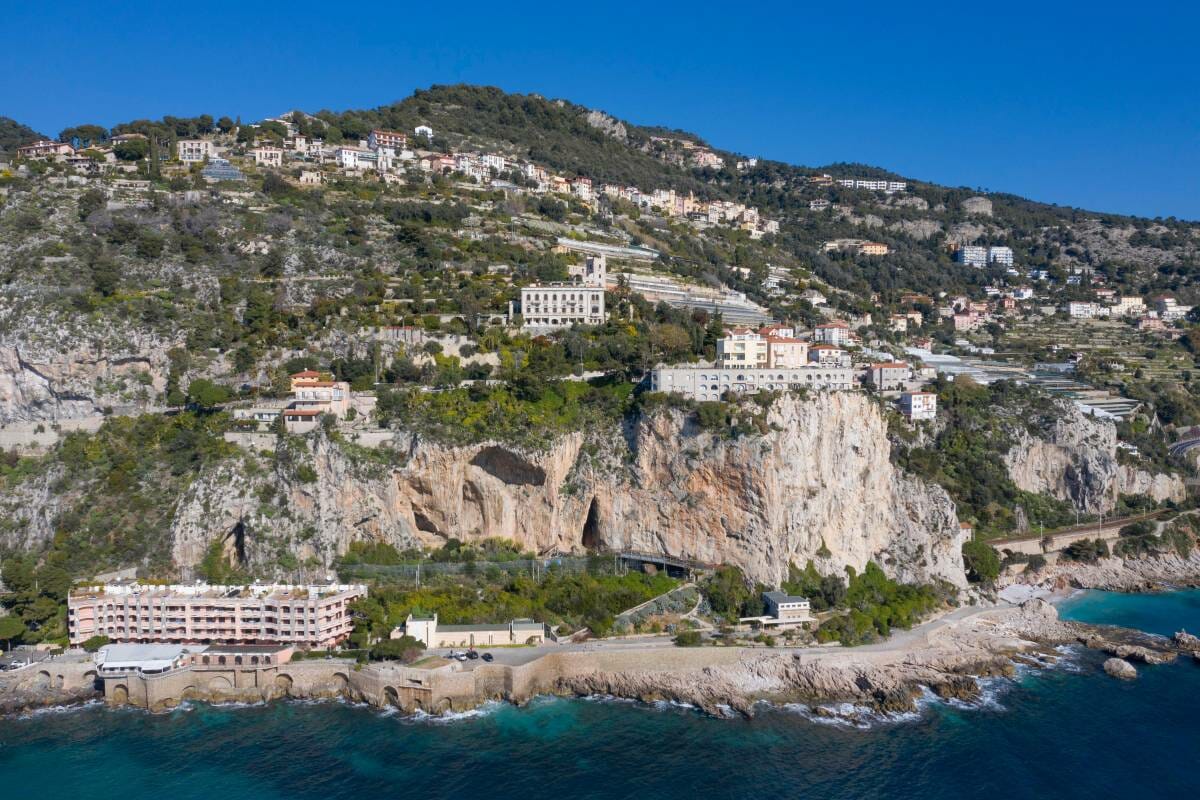
A main pop culture influencer of the 1920s
In the 1920s and 30s, Dr. Voronoff became extremely popular not only in professional circles. Some worshipped him, though others mocked him. Although the technique brought him a great deal of money, the downside was he also quickly went from being a highly respected individual to a controversial one — even in some circles a laughing stock and a subject of ridicule and fear.
In any case, such a bright personality did not leave anyone indifferent. The radio was constantly playing the fiery song “Monkey Doodle-Doo” with such words: “If you are too old to dance, put yourself a monkey gland.” In Paris, ashtrays in form of monkeys defending their genitals with the inscription “No, Voronoff, you can’t catch me!” were selling like hotcakes.
Even Arthur Conan Doyle himself could not resist the charisma of the brave experimenter. In 1923, he wrote the story “The Adventure of the Creeping Man” about the strange behavior of Professor Presbury: under cover of night he goes out to climb trees and tease a dog. Sherlock Holmes and Dr. Watson manage to find out that, in pursuit of youth, the professor agreed to an injection of serum from the glands of a certain primate. Interestingly, the story of the barking mad professor is one of the few stories featuring Sherlock Holmes without any murder or crime.
Finally, the experiments of Doctor Voronoff inspired even the cinema. In 1926, Irish director Rex Ingram directed “The Magician” — in the horror genre, certainly. The film tells the story of the magician’s attempts to get a girl’s blood for experiments to create a new life. The film was based on a story by Somerset Maugham, written a little earlier, but, of course, the hysteria associated with the name of the doctor who allegedly conquers death inspired the director to shoot the film. By the way, some scenes from the film are set in the Monte-Carlo Casino. At first critics called the film mediocre, but in 2011, after being released commercially it deservedly became a classic.
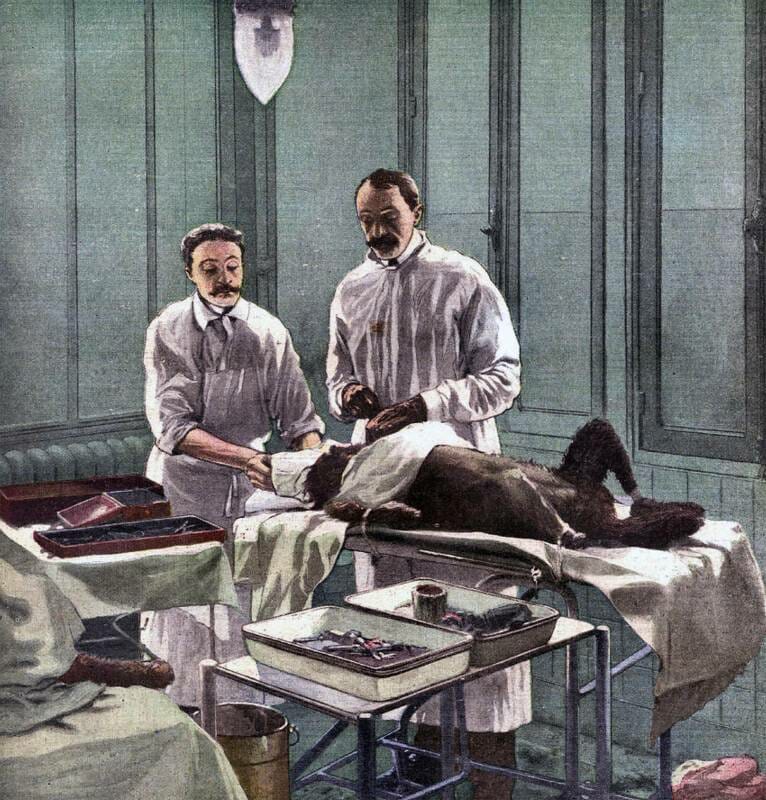
Frontpage of French newspaper ‘Le Petit Journal’, October 22, 1922 @www.alamy.com
Famous Novel “Heart of a Dog”
In Russia such bold experiments on the human body did not pass unobserved by Mikhail Bulgakov, a doctor by training, and in 1925 he wrote “Heart of a Dog”, one of the most famous works of the Master.
Professor Preobrazhensky, driven by scientific curiosity, transplants the pituitary gland of Klim Chugunkin, stabbed to death in a drunken fight, to a stray dog named Sharik. At first the operation seems successful: Sharik takes on human form and begins to speak … Unfortunately,
soon the “cutest dog” gradually turns into the scoundrel Polygraph Polygraphych, who terrorizes the servants, and writes denunciations of the professor. Preobrazhensky, whose life has become a real nightmare, had to turn Sharikov back into a dog. The experiment to transform a flea-bitten dog into an ideal person has failed …
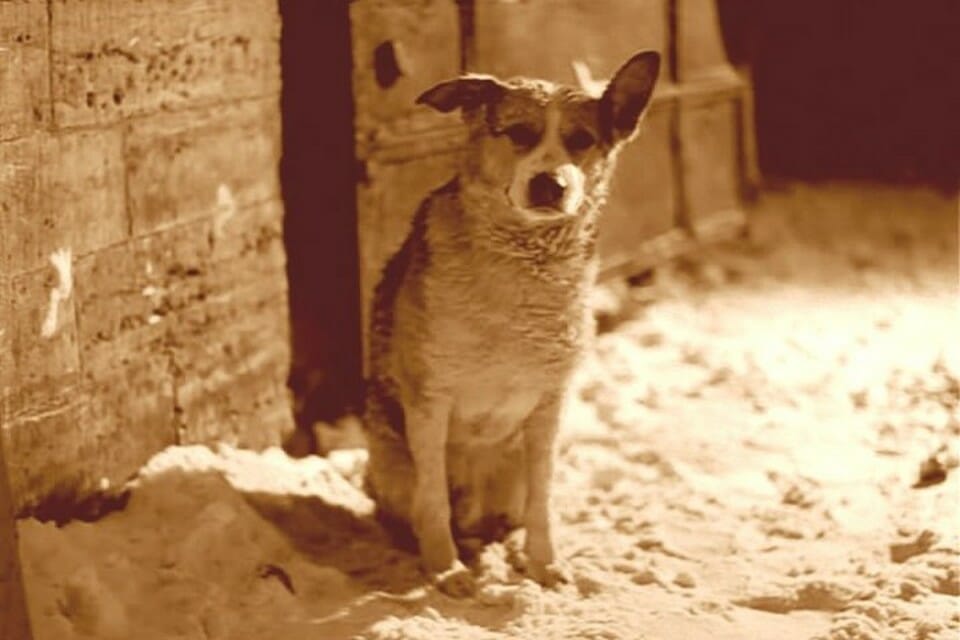
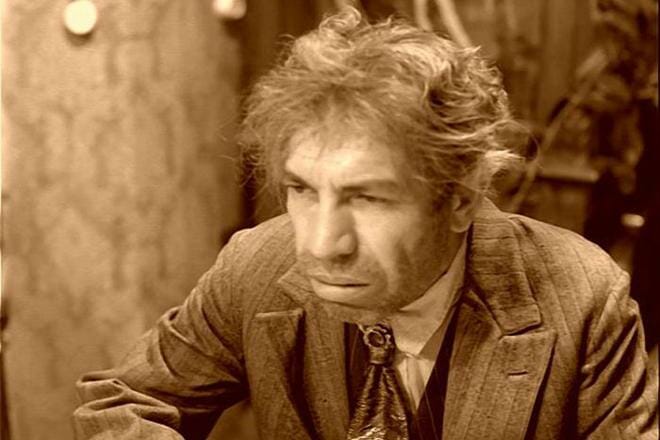
The Descent and Fall from Grace
The glory of Samuel Abramovich himself soon began to fade too. His patients died, the effect of rejuvenation quickly faded away and colleagues ostracized him. Serge Voronoff lost interest in transplantology and began studying the causes of aging and the occurrence of malignant tumours.
But almost 70 years later, the surgeon’s negative reputation began to soften. In November 1991, one of the oldest peer-reviewed medical journals in the world, ‘The Lancet’, suggested that Voronoff’s work be reopened. By 1994, there were calls for a qualified apology from the orthodox medical establishment for dismissing Voronoff’s work. By 2005, Voronoff’s work was noted for setting the basis for a modern anti-aging strategy of replacing hormones, which decline with age, to regain the physical vitality associated with youth.
Quack, Villain or Genius..?
Nowadays, the figure of him as an odious experimenter is perceived ambiguously. Some call him a visionary ahead of his time. Despite the fact that in the 1920s his ideas were considered strange and even sinister, the discovery of the enormous influence of the gonads on human behavior formed the basis of many modern therapies. Samuel Abramovich is considered both the forefather of Viagra and the ideologist of the emergence of hormone replacement therapy that is so widespread now. Official medicine no longer calls into question the fact that hormone production decreases with age, and it is possible to stop age-related changes leading to a decrease in the quality of life often with the help solely of pharmacology.
In 1999 Roger Short, professor at the University of Melbourne, surmised that it was because of the Voronoff experiments with the glands of monkeys that humanity encountered the AIDS virus (later this version was rejected).
Though the life of Serge Voronoff was not eternal, it was immensely interesting and rather long. Samuel Abramovich died 70 years ago, in September, 1951, at the age of 85. He was buried in the Russian cemetery of Nice.

